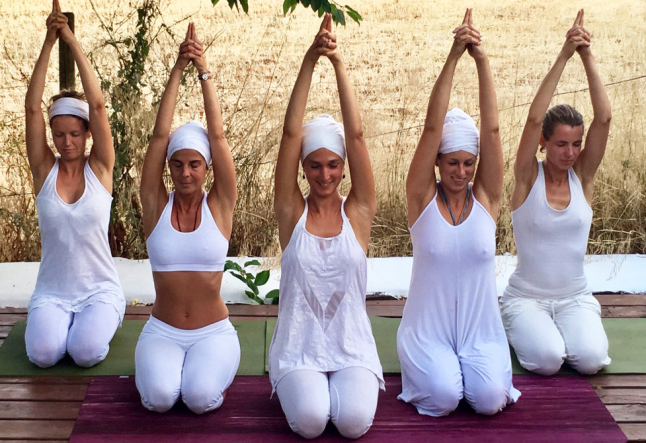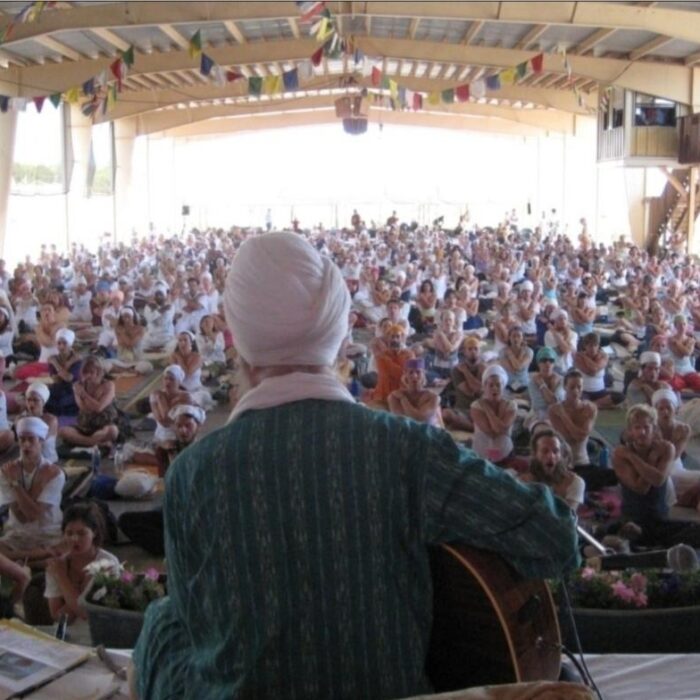Kundalini powers: unlocking your inner potential

Kundalini powers are often spoken of in the context of yogic traditions, yet the depth of their meaning transcends simple explanation. At its core, Kundalini refers to the primordial energy of the universe—your untapped potential, located at the base of your spine within the subtle body.
It’s a powerful force waiting to be awakened, a journey that invites transformation, awareness, and the realization of your higher self.
Yoga, in all its forms, serves as a vehicle for this awakening.
By cultivating practices that prepare the body, mind, and spirit, you can tap into this wellspring of energy, allowing it to rise and illuminate your being.
Also Read: >>> What is the meaning of Sat Nam?
The Journey to Awakening Kundalini
The most well-known approach to awakening Kundalini powers is through Kundalini Yoga, as popularized by Yogi Bhajan.
Historically, this practice was a closely guarded secret, passed only from teacher to disciple. Yogi Bhajan revolutionized this tradition in 1968 by bringing it to the United States.
Through his 3HO (Happy, Healthy, and Holy Organization), he taught that every human being deserves to live a life of happiness, health, and wholeness—not just in a religious sense, but as a fully integrated, balanced individual.
‘Kundalini’ itself stems from the Sanskrit word kundal, meaning ‘coil’ or ‘the curl of the hair of the beloved.’ The imagery of a coiled snake often represents Kundalini energy, symbolizing its latent power and the dynamic potential within every individual.
Breaking down the word reveals a deeper significance: ‘Kunda’ signifies a state of tension or containment, while ‘lini’ symbolizes the blossoming or release of that energy. Together, they describe the transformative process of awakening.
Also read >>> Best Online Yoga for Beginners
Kundalini Yoga: The Science of Awareness
Kundalini Yoga is unique in its comprehensive approach, often referred to as the “yoga of awareness.”
Unlike other yoga practices that emphasize specific limbs of Patanjali’s Eight Limbs of Yoga—such as Hatha Yoga’s focus on asanas or Bhakti Yoga’s emphasis on devotion—Kundalini Yoga incorporates elements of all these traditions.
It’s a fusion of physical, spiritual, and meditative techniques designed to activate and elevate Kundalini powers.
This practice engages repetitive movements, mantras, pranayama (breathing techniques), and kriyas (action-oriented practices) to stimulate the nervous and glandular systems.
The result? A higher state of consciousness and a profound connection to your inner self.
For example, becoming aware of your breath is a key element of Kundalini Yoga. The breath is part of the autonomic nervous system—it happens naturally.
Yet, when you direct your awareness to it, you can observe, regulate, and use it to your benefit.
This awareness transforms your perspective, enabling clarity, presence, and the ability to make sound decisions.
Practical Tips for Awakening Kundalini Powers
Here are a few practical tips to begin your journey of awakening Kundalini powers:
- Practice Sat Kriya daily to balance your energy.
- Incorporate rhythmic breathing exercises like Breath of Fire.
- Maintain a consistent meditation practice to calm the mind and body.
- Explore mantras and chanting to align your energy centers.
- Attend a Kundalini Yoga class to experience guided practice.
Warnings and Precautions
Awakening Kundalini energy can be transformative, but it’s essential to approach it with care. Practicing Kundalini Yoga under the guidance of a qualified teacher ensures a safe experience. Sudden or unprepared awakening of this energy may lead to physical or emotional discomfort as the energy clears blockages.
The Transformative Power of Kundalini
Awakening Kundalini powers isn’t just a physical experience—it’s a journey of self-discovery and transformation. When this energy is activated, it flows upward through the chakras, aligning the body’s subtle energy centers and clearing blockages that hinder growth.
For many practitioners, the experience is life-changing. One shared, “After a month of Kundalini Yoga, I felt more connected to myself, and my decision-making clarity improved dramatically.” These personal transformations highlight the immense potential of this practice.
Why Kundalini Powers Matter
Kundalini powers hold immense significance in today’s world. In an age of constant distractions and stress, awakening this energy can provide a much-needed reset.
It fosters emotional balance, mental clarity, and physical vitality, empowering you to live a more conscious and fulfilling life.
Conclusion
The journey to awakening your Kundalini powers is deeply personal, yet universally transformative. It’s an invitation to unlock your latent potential, align with your highest self, and live with purpose and clarity.
Through the practice of Kundalini Yoga, you gain tools to navigate life’s challenges with resilience and grace.
Whether you’re new to yoga or a seasoned practitioner, exploring Kundalini powers opens the door to a deeper understanding of your inner universe.
It’s not merely about achieving a pose—it’s about experiencing the fullness of life, becoming awake, and embracing the energy within.
FAQs on Kundalini Powers
What are Kundalini powers?
Kundalini powers refer to the latent energy at the base of the spine that, when awakened, leads to heightened awareness, spiritual growth, and personal transformation.
How can I safely awaken Kundalini energy?
The safest way is through guided Kundalini Yoga practice under the supervision of an experienced teacher.
Are Kundalini powers dangerous?
While they are not inherently dangerous, sudden or unprepared awakening can cause emotional or physical discomfort. Proper guidance and gradual practice are key.
Resources:
• Yogi Amandeep, Master Yoga Teacher & Scholar of Eastern Spirituality
• Kundalini Yoga: The Flow of Eternal Power by Shakti Padwha Kaur Khalsa
• 3HO (Happy, Healthy, Holy Organisation)




